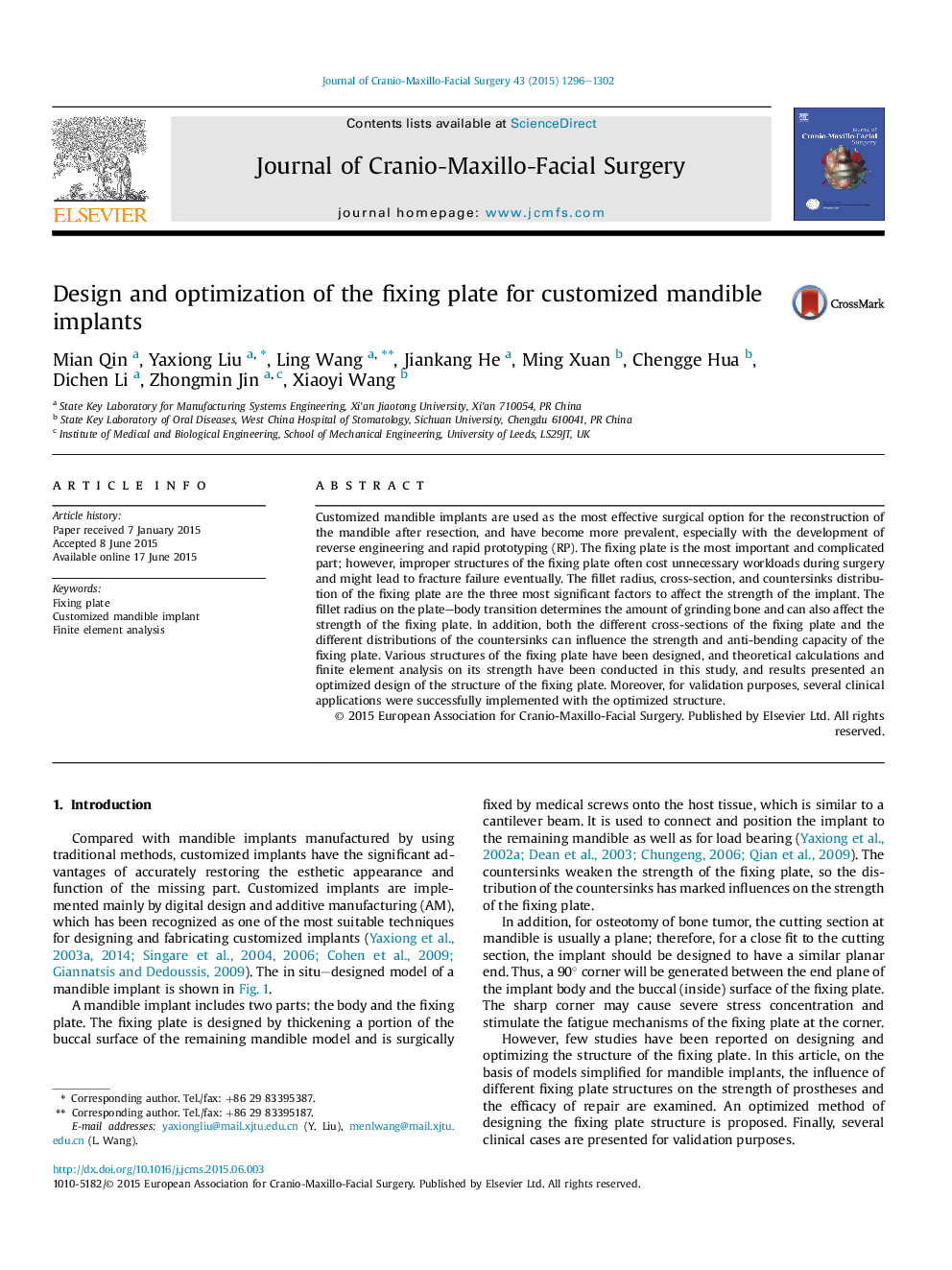| Article ID | Journal | Published Year | Pages | File Type |
|---|---|---|---|---|
| 3142377 | Journal of Cranio-Maxillofacial Surgery | 2015 | 7 Pages |
Customized mandible implants are used as the most effective surgical option for the reconstruction of the mandible after resection, and have become more prevalent, especially with the development of reverse engineering and rapid prototyping (RP). The fixing plate is the most important and complicated part; however, improper structures of the fixing plate often cost unnecessary workloads during surgery and might lead to fracture failure eventually. The fillet radius, cross-section, and countersinks distribution of the fixing plate are the three most significant factors to affect the strength of the implant. The fillet radius on the plate–body transition determines the amount of grinding bone and can also affect the strength of the fixing plate. In addition, both the different cross-sections of the fixing plate and the different distributions of the countersinks can influence the strength and anti-bending capacity of the fixing plate. Various structures of the fixing plate have been designed, and theoretical calculations and finite element analysis on its strength have been conducted in this study, and results presented an optimized design of the structure of the fixing plate. Moreover, for validation purposes, several clinical applications were successfully implemented with the optimized structure.
